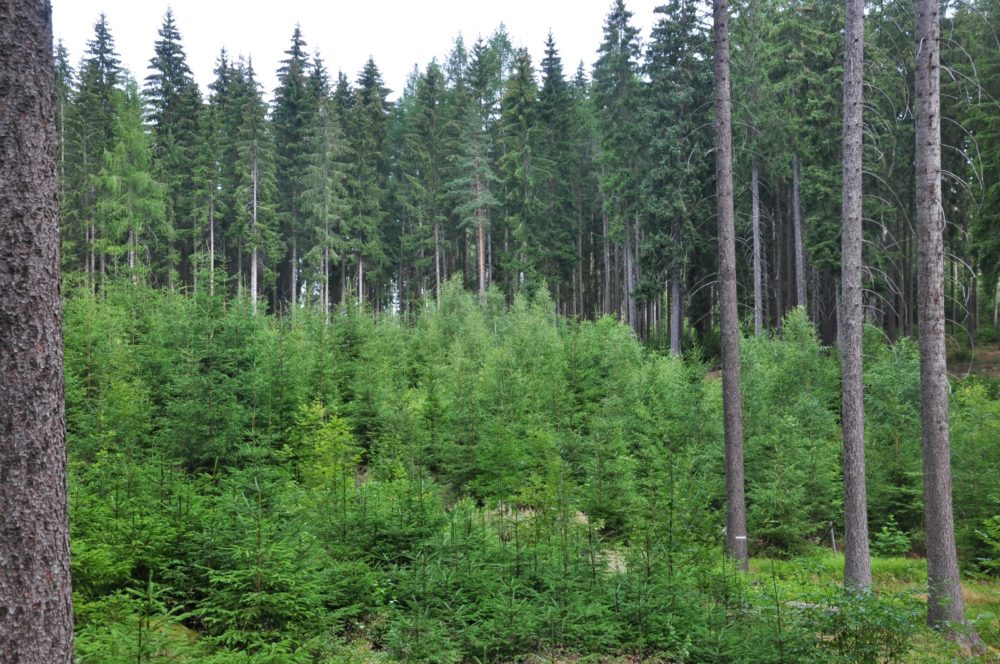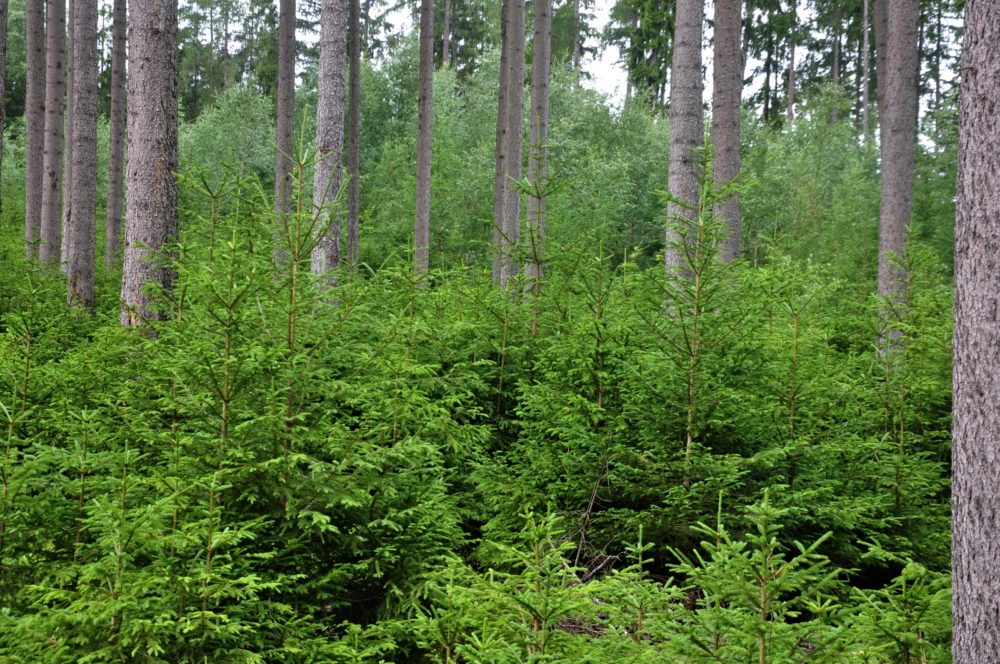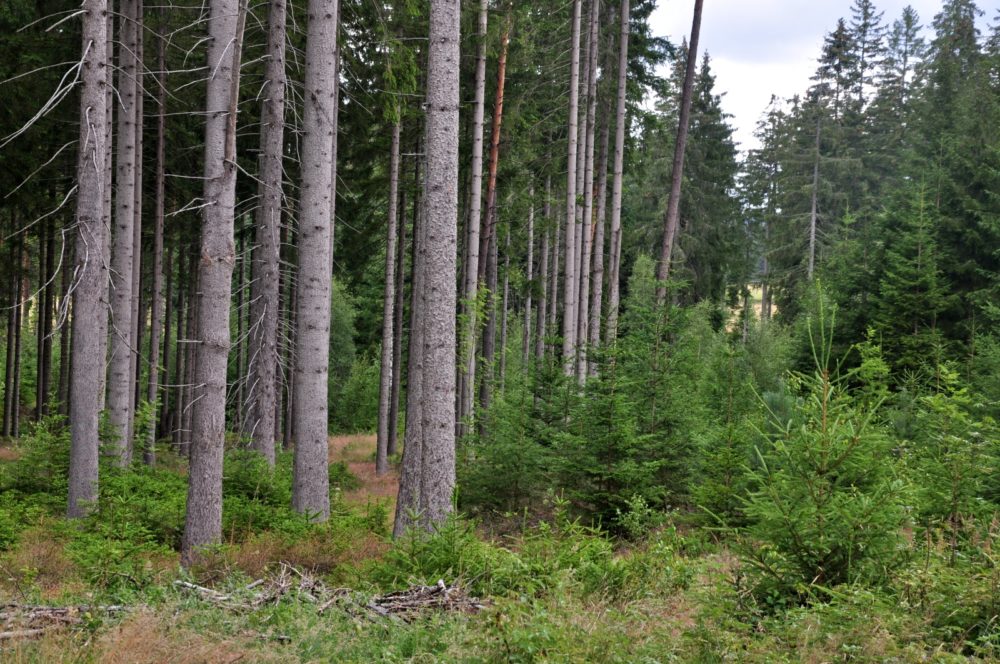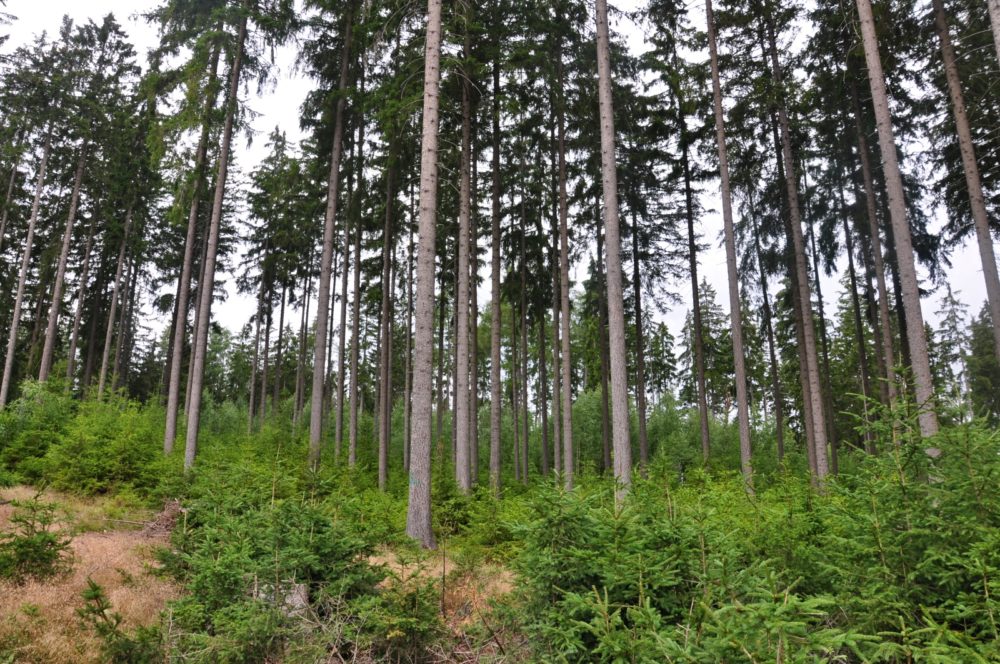Norway spruce is not only a victim of global climate change, but also a tool for mitigating its effects
 Global climate change (GCC) is the reason why the frequency of extreme climate events is increasing. On the one hand, forest ecosystems are exposed to and threatened by GHG, which affects the growth of tree species across the species spectrum. Still, on the other hand, they can mitigate it by sequestering (depositing) carbon into biomass and also acting as a suitable adaptation measure through the regulation of the water regime, and air quality and even by reducing climatic extremes.
Global climate change (GCC) is the reason why the frequency of extreme climate events is increasing. On the one hand, forest ecosystems are exposed to and threatened by GHG, which affects the growth of tree species across the species spectrum. Still, on the other hand, they can mitigate it by sequestering (depositing) carbon into biomass and also acting as a suitable adaptation measure through the regulation of the water regime, and air quality and even by reducing climatic extremes.
Recently, in the conditions of the Czech Republic, especially spruce has been strongly affected by abiotic factors and subsequently damaged by secondary biotic pests (Ips typographus), which caused its increased decline. Despite the ongoing GCC, characterized by an increase in average air temperatures and a change in the distribution of precipitation during the growing season, Norway spruce is still an ecologically and economically important tree species in Central Europe, despite its high sensitivity to wilt.
Norway spruce is the most common tree species in the Czech Republic, representing 49% of the country’s forests. However, large areas of young spruce monocultures have been planted in places where they cannot thrive. Therefore, it is important to understand the impact of various economic measures on forest ecosystems, as this can affect their ecological stability. This knowledge is critical to mitigate the effects of global climate change (GCC) on forests, which can impact their ability to provide essential ecosystem services, such as biomass production, carbon sequestration, and regulation of air and water quality.
 Scientists from the Research Station Opočno, FGMRI (VÚLHM, v. v. i.), have published new information in the paper “Pre-commercial thinning Educational intervention in young Norway spruce stands as a tool mitigating global climate change?” (Výchovný zásah v mladých smrkových porostech jako nástroj mitigace globální klimatické změny?) in the journal Reports of Forestry Research (Zprávy lesnického výzkumu) 3/2023.
Scientists from the Research Station Opočno, FGMRI (VÚLHM, v. v. i.), have published new information in the paper “Pre-commercial thinning Educational intervention in young Norway spruce stands as a tool mitigating global climate change?” (Výchovný zásah v mladých smrkových porostech jako nástroj mitigace globální klimatické změny?) in the journal Reports of Forestry Research (Zprávy lesnického výzkumu) 3/2023.
In the context of global climate change, the availability of resources that have a significant influence on foliage production is crucial for forest trees. This, in turn, affects the interception of solar radiation required for the process of photosynthetic assimilation – the primary production process of plants.
Photosynthetic assimilation begins with the absorption of photosynthetically active radiation (FAR) by plant pigments. The FAR energy is then converted into the energy of chemical bonds of organic substances. At the end of this physiological process, it manifests itself in carbon sequestration (deposit) and plant growth.
The process of converting light energy into biomass is not solely dependent on the quantity of the assimilation apparatus, but also on its quality. Specifically, the ratio of sunny and shady foliage types in the vertical profile of the crown plays a significant role in photosynthetic activity. The sunny foliage type has a higher photosynthetic activity compared to the shady type, which affects the amount of carbon sequestered by individual trees and entire forests.
 Silviculture interventions can regulate the ratio of sunny and shady foliage types in the vertical profile of the crown layer of the vegetation. Research has shown that not only is the intensity of the intervention important, but also the type of intervention. Level intervention increases the proportion of solar-type foliage with higher photosynthetic activity in the vertical profile of the crown, while sub-level intervention does not result in this stimulus for the formation of solar-type foliage.
Silviculture interventions can regulate the ratio of sunny and shady foliage types in the vertical profile of the crown layer of the vegetation. Research has shown that not only is the intensity of the intervention important, but also the type of intervention. Level intervention increases the proportion of solar-type foliage with higher photosynthetic activity in the vertical profile of the crown, while sub-level intervention does not result in this stimulus for the formation of solar-type foliage.
Silviculture measures have a significant impact on both the quantity and quality of foliage, which directly affects the efficiency of photosynthetically active radiation utilization by the canopy.
Foliage is a dynamic and variable component of forest structure, and even minor spatial and temporal changes can have a significant impact on vegetation conditions. Therefore, foliage quantity is a crucial descriptive variable in physiological, climatological, hydrological, and biochemical studies.
The researchers conducted their experiment in young 15-year-old (2021) spruce stands, which were unmixed and located in a flat terrain at an altitude of 402 meters above sea level. These locations are beyond the suitable limit for planting Norway spruce in the Czech Republic’s conditions, and according to climate scenarios, the spruce at this site will be significantly stressed by adverse climatic factors.
 In 2018, scientists established three research trials. The initial planted trees’ density (3,500 trees/ha) of the monitored trials was reduced in the winter of 2019/2020 by an educational intervention of varying intensity on the plant density:
In 2018, scientists established three research trials. The initial planted trees’ density (3,500 trees/ha) of the monitored trials was reduced in the winter of 2019/2020 by an educational intervention of varying intensity on the plant density:
- 1,800 individuals/ha (moderate intervention)
- 1,300 trees/ha (heavy intervention)
- Control variant, which was left to spontaneous development (i.e. initial 3,500 individuals/ha)
The silviculture intervention was implemented based on negative selection with the core of cultivation care in the sub-level of the stand. During the silviculture intervention, emphasis was placed on leaving the sloping edge of the stands for the sake of their stability, and immediately after the intervention, all mining residues were cleared.
Based on the obtained results, the scientists formulated the following conclusions:
- The highest efficiency of solar radiation use was in the stand with a strong silviculture intervention, where the number of individuals was reduced from the original 3,500 trees/ha to 1,300 trees/ha.
- The strong silviculture intervention increased the efficiency of solar radiation use five times compared to the control variant without silviculture measures.
- The spruce stand with a strong silviculture intervention had about a third higher increase in measured values than the stand influenced by a moderate intervention (i.e. reduction from 3,500 trees/ha to 1,800 trees/ha).
- For the possibilities of mitigating the impacts of the ongoing GCC in spruce stands, early strong silviculture intervention appears to be the most suitable.
Paper “Pre-commercial thinning Educational intervention in young Norway spruce stands as a tool mitigating global climate change?” (Výchovný zásah v mladých smrkových porostech jako nástroj mitigace globální klimatické změny?) can be downloaded here.
Author of paper: Jakub Černý, FGMRI (VÚLHM, v. v. i.), Research Station (VS) Opočno, e-mail: cerny@vulhmop.cz
Prepared by: Ing. Jan Řezáč, FGMRI (VÚLHM, v. v. i.), e-mail: rezac@vulhm.cz
Illustrative photos: Examples of spruce stands having been renewed (author Jan Řezáč)
